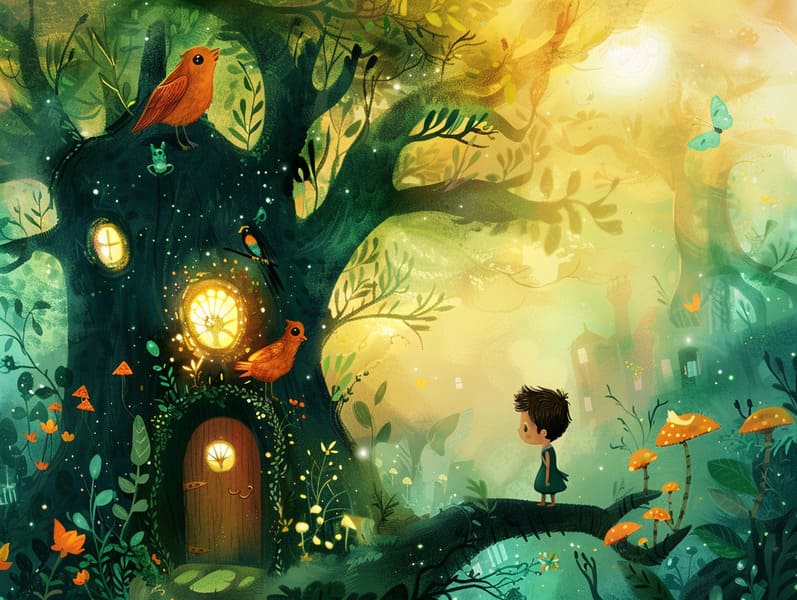A Brief History of Fairy Tales and Its Everlasting Fascination.
A Brief History of Fairy Tales and Its Everlasting Fascination.
Blog Article

Traditional fairy tales have ancient roots. These narratives have been relayed from one generation to the next long before they were ever put on paper. They sprang from a variety of civilizations, including Indigenous traditions. They were initially transmitted among elders, often carrying themes and messages pertaining to the societal norms and beliefs of the time.
Jacob and Wilhelm Grimm, Jacob and Wilhelm (the Grimm brothers), were among the first to collect many of these beloved narratives. Their anthology, "Grimm's Folk Tales," included classics like "The Little Glass Slipper," "The Story of Hansel and Gretel," and "Little Snow White," which have since become hallmarks in the world of famous fairy tales. Similarly, Hans Christian Andersen's enchanting fairy tales, such as "The Mermaid," and "The Ugly Duckling," have won hearts worldwide, ensuring their place in the pantheon of timeless fairy tales.
Though they are old, these stories remain as significant as ever, especially as bedtime stories for kids. These whimsical stories are now available in numerous formats, including colorful picture books, magical animations, and internet fairy tales.
Their persistent charm can be linked to several delightful features:
Key Lessons: Classic fairy tales often whisper important moral lessons. Fairy tales like "The Tale of the Boy Who Cried Wolf" teach the benefit of sincerity, while "The Hare and the Tortoise" point out the virtues of tenacity and meekness. These stories offer the young clear distinctions between right and wrong, guiding their moral compass in a tender yet profound way.
Kindness and Comprehension: Fairy tales frequently depict personalities facing challenges and struggles, inspiring listeners to sympathize with their struggles and champion their triumphs. For instance, "The Tale of Beauty and the Beast" highlights the benefit of looking deeper to appreciate the inner spirit of a being, enhancing kindness and discernment.
Cultural Recognition: Many traditional fairy tales are imbued with the cultural contexts from which they originated. Delving into these fairy tales can provide intriguing perspectives into different traditions, nurturing a sense of global understanding and perception.
Creativity and Fantasy: The fanciful elements in classic fairy tales—fairy godmothers—revitalize children’s innovative ideas. These tales move readers to enchanted realms, activating inventive ideas and a sense of wonder that endures a lifetime.
Traditional fairy tales are not only fascinating but also illuminating. They provide enchanted tools in strengthening various thinking and feeling skills in kids. When timeless fairy tales are narrated, they foster linguistic abilities by bringing new words and detailed sentence structures. This practice also fosters listening skills and attention span, as young readers stay focused, anxious to see what happens next.
Furthermore, talking about the themes and characters of ancient fairy tales can cultivate cognitive skills and intellectual skills. Young ones are taught to see patterns, make predictions, and figure out cause and effect. These reflections also ease kids say their thoughts and feelings, fostering their emotional intelligence.
In today’s online age, the proliferation of online fairy tales has made these tales more within reach than ever. Web platforms and online apps offer extensive collections of old fairy tales that can be explored or listened via anytime, anywhere. Fairy tales narrated are particularly popular, extending an fascinating method for young ones to take part in these spellbinding stories. Narrated books and narrated videos move characters and settings to life, often accompanied by spellbinding harmonies and background music that raise the narrative experience.
The unfading fascination of ancient fairy tales lies in their ability to adapt to modern society while keeping hold of their underlying messages. Contemporary reimaginings of these narratives often feature more varied protagonists and modern settings, making them meaningful to today’s audience. However, the essential messages of daring, understanding, and truth remain unchanged, continuing to strike a chord with listeners of all ages.
Ancient fairy tales also offer a sense of reassurance and knowability. They extend a systematic narrative with a recognizable beginning, middle, and end, often drawing to a close with the wrap-up of conflicts and the triumph of truth over falsehood. This dependability can be placating for little ones, extending a sense of invariability in an variable world.
Timeless fairy tales continue to allure and train new generations, maintaining their loveliness and meaningfulness in modern society. As kids' bedtime tales, they put forth a perfect blend of charm and understanding, boosting moral values, empathy, and creativity. The availability of digital storybooks and the likability of fairy tales recited make sure that these ancient tales remain accessible to new generations.
By upholding and spreading these stories, we continue to extol the rich tapestry of fantasy and cultural heritage. Whether you are experiencing a beautifully illustrated book, experiencing a cyber library, or listening through an read-aloud story, the splendor of old fairy tales is always within reach. These narratives highlight of the ageless spell of fairy tales and its ability to link us across eras and regions.
If you are viewing a vibrantly illustrated book, awesome site delving into a electronic collection, or listening via an read-aloud story, the delight of Grimm's fairy tales is always within reach.
These fairy tales reveal of the ageless magic of stories and its ability to bond us across centuries and lands, creating a bond that captivates and teaches alike.